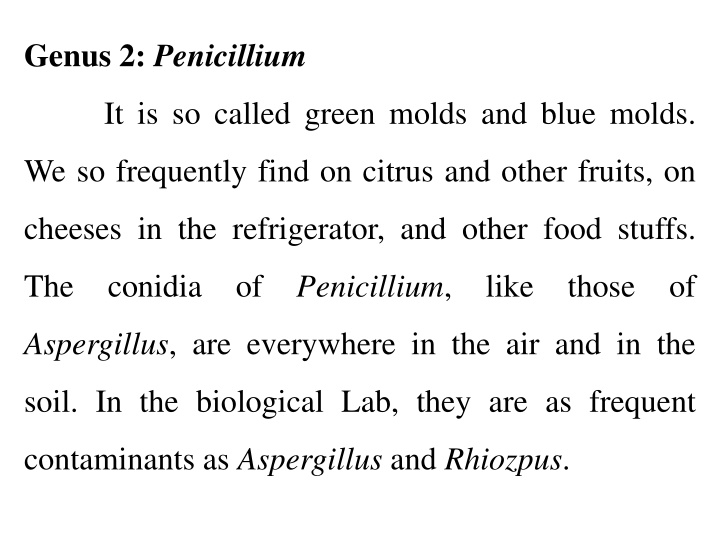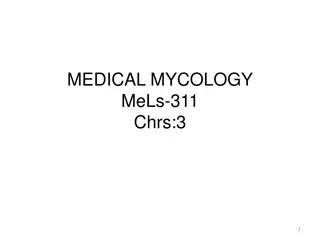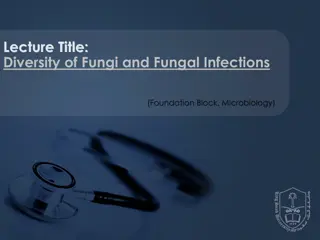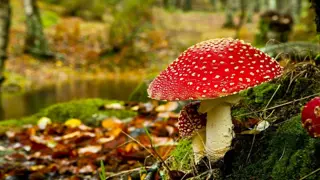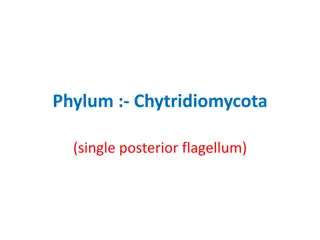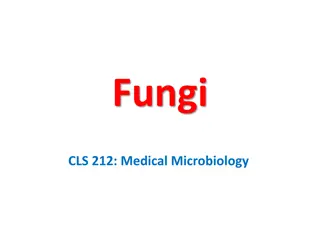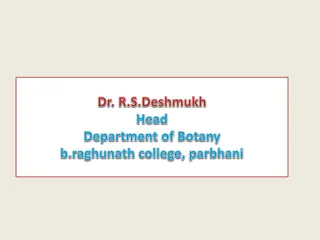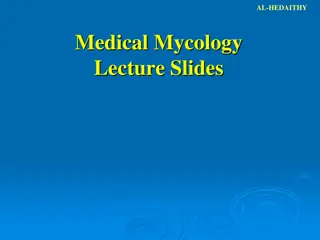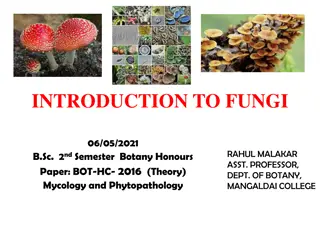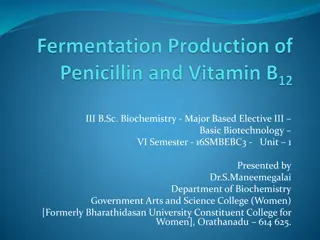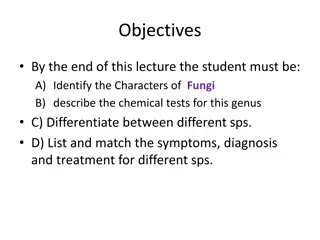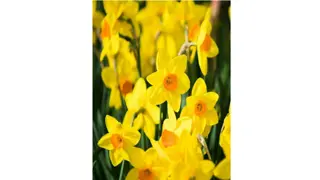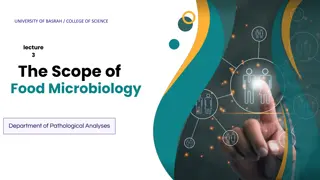Insights into Penicillium and Gymnoascaceae Fungi
Penicillium fungi, known as green molds and blue molds, are commonly found on citrus fruits, cheeses, and other food items. Various Penicillium species can cause fruit decay and are used in antibiotic production. Gymnoascaceae fungi include dermatophytes and systemic pathogens for humans. Nannizzia and Arthroderma species characteristics are outlined.
Download Presentation

Please find below an Image/Link to download the presentation.
The content on the website is provided AS IS for your information and personal use only. It may not be sold, licensed, or shared on other websites without obtaining consent from the author.If you encounter any issues during the download, it is possible that the publisher has removed the file from their server.
You are allowed to download the files provided on this website for personal or commercial use, subject to the condition that they are used lawfully. All files are the property of their respective owners.
The content on the website is provided AS IS for your information and personal use only. It may not be sold, licensed, or shared on other websites without obtaining consent from the author.
E N D
Presentation Transcript
Genus 2: Penicillium It is so called green molds and blue molds. We so frequently find on citrus and other fruits, on cheeses in the refrigerator, and other food stuffs. The conidia of Penicillium, like those of Aspergillus, are everywhere in the air and in the soil. In the biological Lab, they are as frequent contaminants as Aspergillus and Rhiozpus.
Various species of Penicillium attack and destroy fruits; P. italicum and P. digitatum are common pathogens of citrus and fruits causing blue mold and green mold respectively. P. expansum causes a decay of apples in storage. P. notatum or P. chrysogenum was used for penicillin production, and P. griseofulvum was used for griseofulvin production, which is the best antibiotic effective in control of fungal skin diseases (Dermatomycoses), such as athlete s foot. The sexual stage of Penicillium is called Talaromyces.
Family2 : Gymnoascaceae Fungi that includes the ascomycetous state of many of the dermatophytes and several of the systemic pathogens for humans :Histoplasma capsulatum , Blastomyces dermatidis, Nannizzia (Microsporum), Blastomyces, Arthroderma (Trichophyton).Until the sexual forms were recognized, these pathogens were classified with Imperfect Fungi
Nannizzia (Microsporum): Usually devoid of conidia (macro- or microconidia). Septate hyphae with terminal chlamydoconidia, often pointed at the end. Macroconidia are often irregular or non- uniform in shape. Colonies on culture media are flat, silky in appearance. Growth of colonies on culture media is tight. On reverse of colony - pigment is reddish-brown in color.
Arthroderma(Trichophyton) : The word "trichophyton" literally means "hair plant". Presence of macroconidia in cultures varies and may not help in identification of cultures. Microconidia shape and presence varies. Microconidia are globose (round-shaped), pyriforme (pear-shaped), or clavate (club-shaped). Most common species include: Trichophyton mentagrophytes , T. rubrum , T. tonsurans and T. verrucosum.
